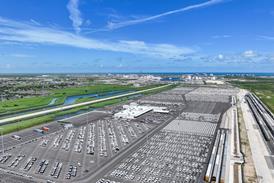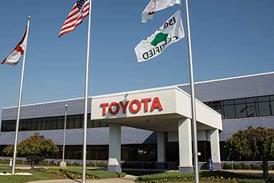At Automotive Logistics and Supply Chain Digital Strategies North America in Nashville, John Godfrey, senior director logistics operations at Pirelli Tire North America, shared insights on the company’s evolving digital roadmap in logistics, emphasising enhanced visibility, data control and system integration.
Pirelli is currently upgrading from second-generation warehouse management systems (WMS) to third-generation platforms, which now include capabilities like barcode scanning and GPS shipment tracking. These advancements are designed to provide both Pirelli and its third-party logistics providers with deeper visibility across operations. “Now we’re going to the third generation where we’re having barcode scanning, things like that, that maybe wasn’t done in the past,” Godfrey explained. The shift is part of a broader initiative to enhance both inbound and outbound transport management systems (TMS), enabling better service for both domestic and international markets.
Strategic goals underpinning these investments include cost efficiency, ROI, and proactive decision-making. “You want to have an ROI on whatever investment you’re doing, whether it’s giving you better visibility that allows you to see the cost before they happen or visibility on the cost after they happen and then do projections for the future,” said Godfrey. This emphasis on predictive analytics highlights how digital tools are enabling smarter logistics planning and reducing surprises in the supply chain.
Data ownership and control also featured as a key concern for Pirelli, particularly given the increasing volume of data generated through these new systems. “When you have systems, whether they’re internal or external, you want to make sure you’re controlling the data,” Godfrey stated, pointing to the importance of leveraging internal data securely and effectively. With more robust data, the company can improve analytics and deliver more innovative logistics solutions.
Another critical focus for Pirelli is the integration of security features through digital tools. For example, the company is now able to track product shipments in real time using GPS, which enhances both delivery accuracy and risk management. “This allows us to both know where our product is, but also if there’s a security incident or some type of risk management incident, we can be on top of that very quickly,” said Godfrey. These tools not only ensure timely deliveries but also mitigate potential disruptions or threats.
As Pirelli continues its digital journey, ensuring the workforce is prepared for and aligned with technological changes remains a top priority. “You also want people that have vision to think how to do this better, where the strategy is they can understand how their portion, their function fits into the bigger picture for the whole company,” he added. Looking forward, Godfrey said the company is aiming to gain more efficiency in transportation and sourcing, and hopes to be further down that path within the next year.
Topics
- Data Analysis & Forecasting
- Data Management & Security
- Digitalisation
- DSNA25
- Editor's pick
- Inbound Logistics
- Interviews
- Inventory Control
- Inventory management
- Just-in-Time
- Lean Logistics
- Logistics IT
- Material & Inventory Management
- North America
- Plant Logistics
- Policy and regulation
- Purchasing
- Rail
- Road
- Suppliers
- Supply Chain Focus
- Supply Chain Planning
- Transport Management Systems & Warehouse Management Systems
- United States Of America
- Video and Audio













































No comments yet